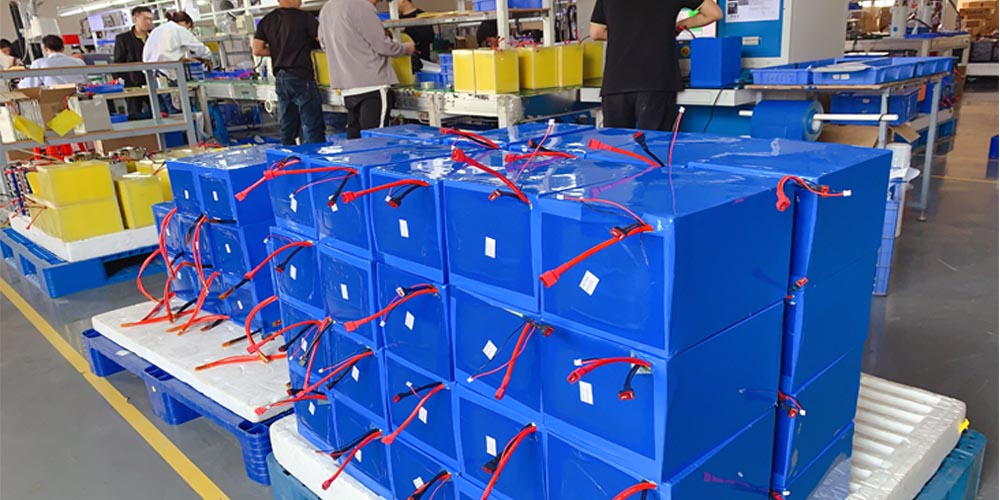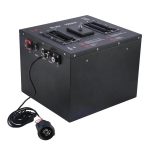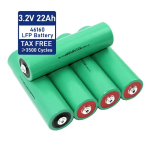Lithium was discovered in 1817 by Swedish Chemist, Johan August Arfwedson. You might remember seeing “Li,” on the periodic table on your school teacher’s wall, but Arfwedson first called it ‘lithos’, which means stone in Greek. Li is a soft, silvery-white alkali metal and its high-energy density makes it a great choice to give batteries an extra boost.
The “Lit” in Lithium batteries
According to Power Electronics, there are 6 different types of Lithium-ion batteries, ranging from Lithium Cobalt Oxide (LiCoO22) batteries to Lithium Nickel Manganese Cobalt Oxide (LiNiMnCoO2) batteries and Lithium Titanate (LTO) batteries. Historically, Lithium batteries like Lithium-ion or Lithium Polymer offered distinct advantages over their other Lithium battery counterparts because of their longevity, reliability, and capacity. However, Lithium-ion/polymer batteries proved problematic and needed to be handled with care, precisely because of their “thermal runaway” and proneness to exploding or catching on fire. But, thanks to the progress made in the Lithium battery and technology industries, more stable and safer batteries were developed, like our Lithium Iron Phosphate (LiFePO4) battery.
Now that you are up-to-speed with all-things Lithium, here are our 5 reasons why we opt to use Lithium Iron Phosphate (LiFePO4) technology.
1. Safety:
LiFePO4 is more chemically stable, and it is incombustible, which means that it is not prone to thermal runaway (and remains cool at room temperature). It can also withstand high temperatures without decomposing, and it is not flammable. The bottom line is, you don’t have to worry about it exploding or catching alight on the job.
2. Sustainable:
LiFePO4 batteries have a longer cycle life, and the fact that they are rechargeable makes them sustainable. In essence, you can keep using a LiFePO4 batter over and over again. LiFePO4 is a nontoxic material and doesn’t give off dangerous or hazardous fumes, which makes it safe for you and the environment too.
3. Long lasting:
A Lithium LiFePO4 battery does not need to be fully charged to use. This means that you can connect several batteries in parallel, without damaging the batteries which are less charged than others. It can also be discharged quickly without damaging the cells either. LiFePO4 batteries have a shallow rate of self-discharge, which means they can be left standing for months and not run out of juice or cause permanent damage. They also have a longer and better life cycle, ranging in the thousands. (more than 2000 cycles).
4. Efficiency:
A Lithium LiFePO4 battery has a much higher charging rate, it charges quicker than other batteries, and charging it is effortless. It also requires zero maintenance, which means you’ll experience minimal downtime and maximum productivity when you use Lithium LiFePO4 battery tug. Lithium LiFePO4 batteries are lighter and occupy less space, which makes pushing and pulling a compact tug with a Lithium LiFePO4 battery, ergonomic. Our Lithium LiFePO4 battery is versatile and easily intergrade with many of our tugs. Since the battery is rechargeable and simple to charge, which means they are ready to move when you are.
5. Performance:
Lithium LiFePO4 batteries have an optimal energy density in both volume and weight and have good specific energy, which means the battery can give the necessary power when needed. It’s also worth mentioning that Lithium LiFePO4 batteries have excellent cycling performance too.
Bonus: Battery management system
Our Lithium battery comes standard with a battery management system (BMS) to manage the rechargeable Lithium LiFePO4 battery. How it does this is by monitoring the battery’s state and the cells. It also collects various sets of data to calculate and control the battery’s environment. One of the critical functions of the BMS is to balance the cells to ensure that the battery can perform at its best while protecting it by observing its voltage and temperature to avoid cell failure.
Our decision to use a Lithium Iron Phosphate battery for our electric tugs has been a ‘LiFe’ changing one —not only for the tugs but for the people who use them.



